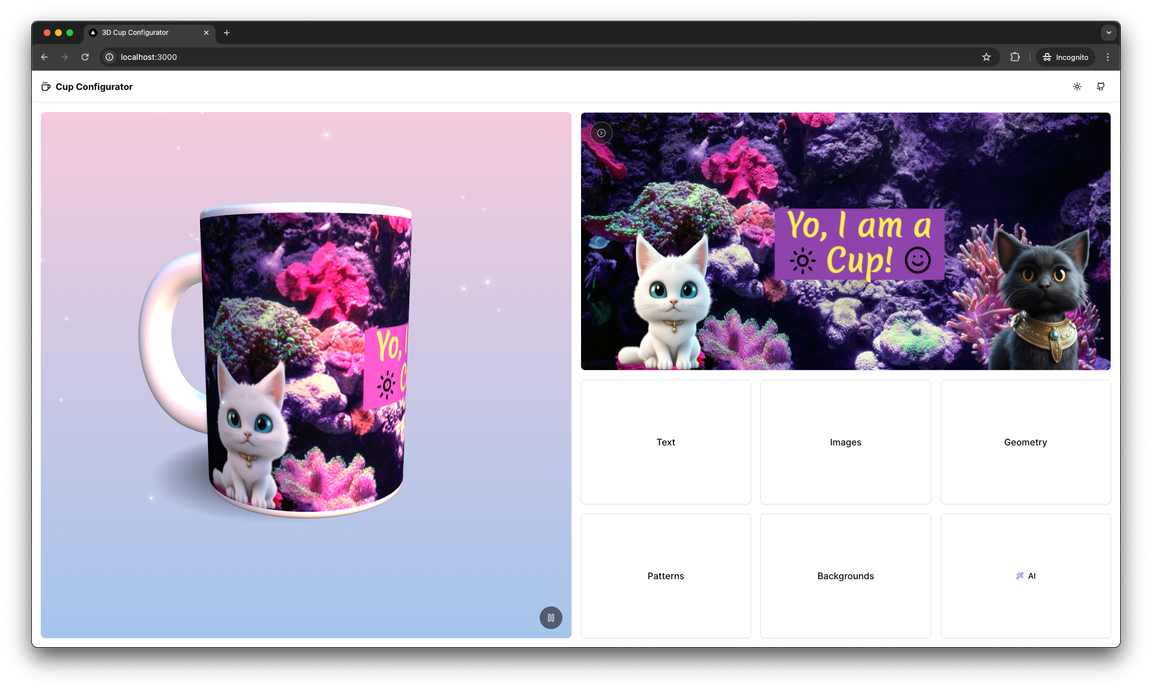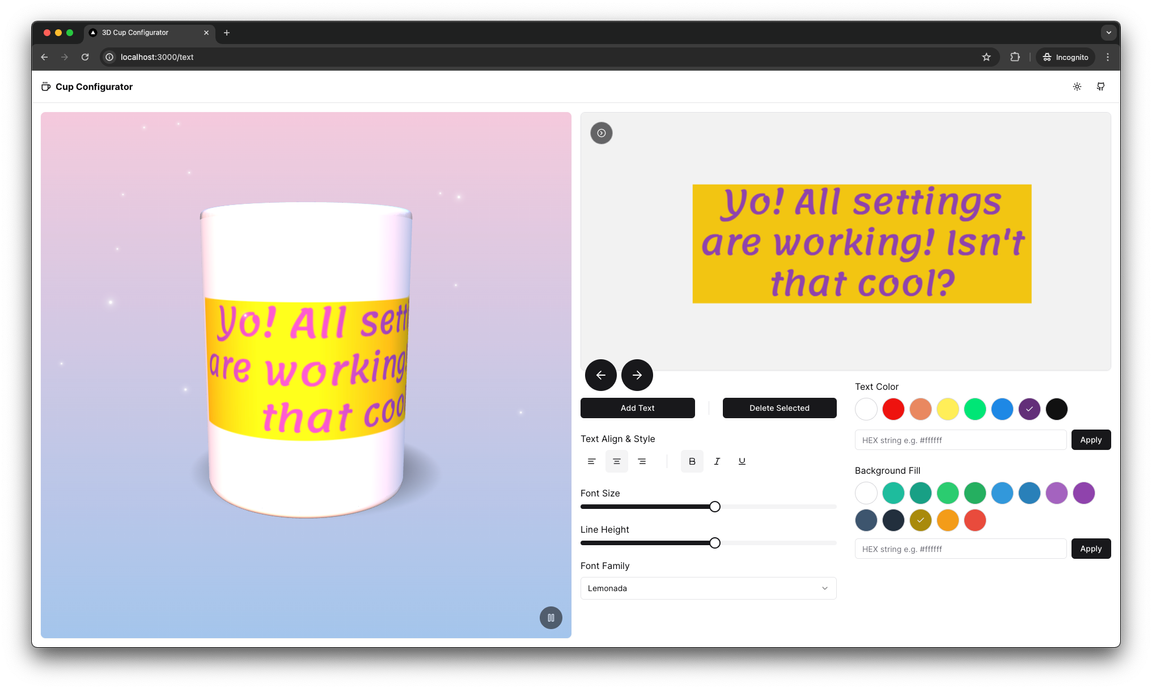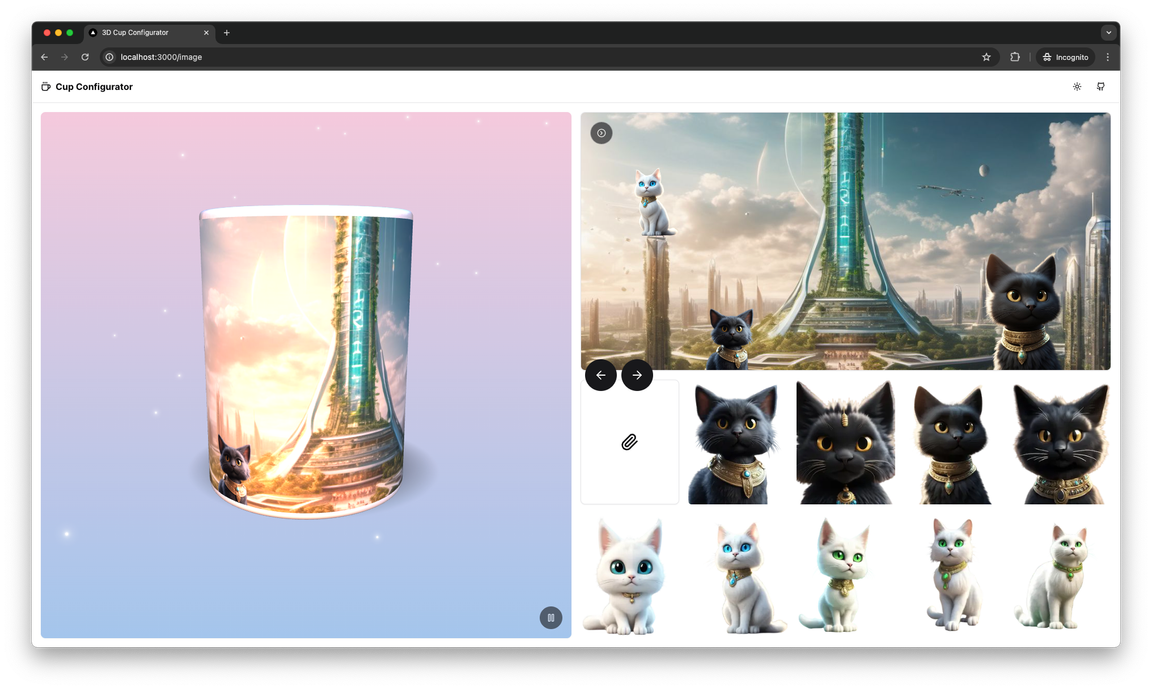How to make 3D AI Cup Configurator on Three.js and React.js [Part 2]


12 min read
Then, according to the 2nd point from the plan above, we will implement the remaining functionality. Go to components/Configurator/Canvas2D/Actions.tsx and write logic in the click handler for each of the Actions:
.../Canvas2D/Actions.tsxtsx
Don’t forget to check the import for downloadCanvasAsImage() from lib/utils.ts for the “Save canvas as image” action:
lib/utils.tsts
After that try to clear the standard Canvas2D image by clicking on “Clear canvas” action and if you succeeded and the image is gone, then go to the 3rd point of the plan.
According to the 3rd point of the algorithm for creating 3D cup configurator, go to the component in the components/Cup.tsx directory and add the necessary logic for animating the appearance of the mug, display the mug itself and the texture of the print on the mug based on the information from Canvas2D. Then the component will look as follows:
tsx
Also in components/Configurator/Canvas3D.tsx I propose to remove the comment for the Sparkles component from 43 to 49 lines and thus add a little charm to the scene with the mug and then our application at this stage will look like this:

Let’s continue the implementation of 3D cup configurator and follow the 4th point of the development plan described in the first part. And let’s start with the Text panel.
Text panel implementation
First of all, let’s implement the function of adding and deleting text on Canvas2D. In the CreateDeleteTextButtons.tsx component add logic so that the component looks as follows:
tsx
Let’s add the ability to change text alignment and style settings by adding logic to the ToggleAlignAndStyleTextGroups/index.tsx component:
tsx
Let’s add logic to FontSizeSlider.tsx:
tsx
Also to LineHeightSlider.tsx:
tsx
Also to FontFamilySelect.tsx:
tsx
Next, the BackgroundColorListItems.tsx component:
tsx
And the FontColorListItems.tsx component:
tsx
Also HexColorInput.tsx:
tsx
As well as TextSettingsPanel/index.tsx:
tsx
And after that, try changing all the text settings to check that all components have the expected behavior. In my case, I created the following text:

Images panel implementation
Let’s continue with the implementation and move on to writing the logic for the Images panel. Let’s start with the UploadImageButton.tsx component:
tsx
And the SetImageButton.tsx component:
tsx
Now let’s try loading the pre-made images onto Canvas2D and then our own and adjust the layers using the appropriate actions. This is what I got:

Wow! That looks amazing! It’s time for a brief summary of what’s been done.
Summury
In this part we continued building the configurator functionality and implemented components for the large Text panel and for the Image panel. In the final article we will create the remaining components and finish creating the application by deploying the source code on Github and Vercel.